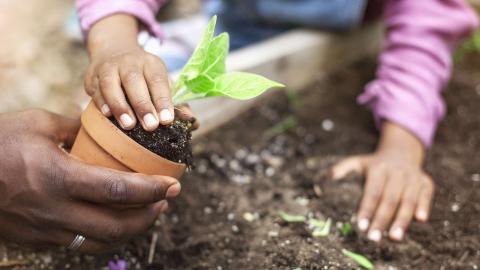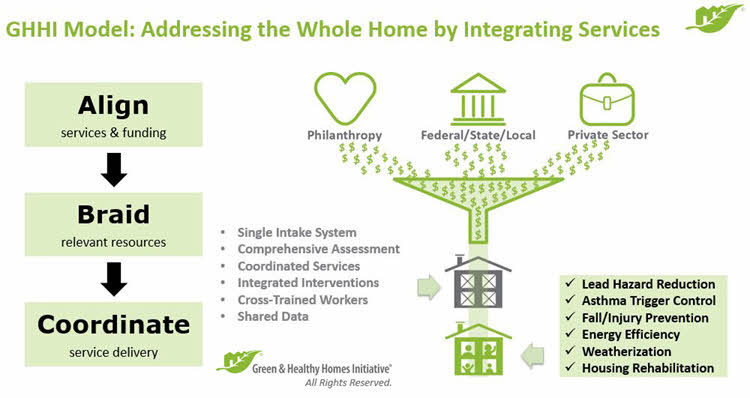
As we’ve been highlighting in our energy equity research and resources, utilities are working with the communities they serve to apply an equity lens to their demand-side management, distributed energy resource, and EV programs. They’re also incorporating equity into their marketing and communications, internal operations, and trade ally engagement. And they’re learning more about the unique needs and challenges of the communities they serve and modifying programs and services to increase energy equity and affordability.
Amid this progress, the industry still has a long way to go and can benefit greatly from thought leadership and guidance in this emerging, evolving area. So it was an honor to have Dr. Tony Reames, senior adviser on energy justice for the US Department of Energy’s (DOE’s) Office of Economic Impact and Diversity (and founder of the University of Michigan’s Energy Equity Project), join us for the latest episode of our PowerTalking podcast. Dr. Reames shared his thoughts for how we can move toward an equitable energy future.
We covered a lot of ground in our discussion, including the importance of collaborating with local community leaders and community-based organizations (CBOs). In this post, we’ll take a deeper look at how community engagement strengthens and supports equity initiatives.
Local stakeholders are essential to helping utilities build equitable programs
In our conversation with Dr. Reames, we kept returning to the importance of working with local stakeholders to understand, engage, and serve customers who haven’t historically benefited from utility programs. The following strategies to engage CBOs, trade allies, and community members to learn from their perspective and expertise are just a few of our recommendations.
Partner with CBOs to distribute funding and promote programs
CBOs are often in the best position to understand a community’s needs. Utilities can partner with these groups to design programs, conduct outreach, and implement projects. Utilities can also use these partnerships to advance the CBO’s existing mission or add new capabilities. The Green & Healthy Homes Initiative (GHHI) is a shining example of this type of partnership. GHHI integrates necessary funding from private and public sources to effectively deliver results for low-income residents.
GHHI takes a holistic and integrated approach to address housing, health, and racial disparities to ensure better outcomes for low-income communities of color. GHHI’s model focuses on the importance of coordination between housing and health-related agencies and private partner stakeholders to work efficiently and offer a streamlined application process for families in need (figure 1).
Figure 1: The GHHI model
There are also opportunities for utility collaboration with federal, state, and local governments. One such opportunity is the DOE’s Communities LEAP (Local Energy Action Program) Pilot. Dr. Reames described this as a “community-driven approach to our clean energy future, which requires that applicants bring along a utility or government partner.” According to the Communities LEAP website, the pilot aims to:
[F]acilitate sustained community-wide economic and environmental benefits primarily through DOE’s clean energy deployment work. This opportunity is specifically open to low-income, energy-burdened communities that are also experiencing either direct environmental justice impacts, or direct economic impacts from a shift away from historical reliance on fossil fuels.
Engage community members as mentors
FortisBC was a founding member and financial partner of the Empower Me program, an energy conservation program specifically for new immigrants in Canada. The program hires and trains people from local communities to work with participants in their native language. These energy mentors learn about conducting home energy audits and the utility’s other offerings. The program is available in 16 languages.
Work with a diverse group of trade allies
Partnering with diverse trade allies on utility programs will help support their businesses and increase the diversity of customers enrolled in programs. One of Energy Trust of Oregon’s diversity, equity, and inclusion goals was to increase the number of projects completed by minority- and women-owned trade allies. The organization “received feedback from trade partners that providing [job] leads to minority-owned contractors could help drive project volume and remove barriers to participation in [its] programs,” according to its 2020 Annual Report.
Offer workforce development opportunities to communities
ComEd created more opportunities for diverse contractors—including minorities, women, and veterans—through an incubator project. For this project, the utility spent six months training 20 contractors at no cost to the contractors. At the end of the course, ComEd added 14 of them to its trade ally network. In our discussion, Dr. Reames stated, “Utilities are huge drivers of the economy in their states and local communities. How are you diversifying not only your utility workforce but also the whole supply chain? I would encourage utilities to do that type of analysis and expand those types of opportunities.”
Maintaining momentum toward energy equity
Utilities have the power to maintain momentum as we reach for an equitable energy future. Creating more-sustainable and equitable energy systems is a large, interdisciplinary challenge that will require partnerships with communities to develop creative solutions. It’s important to continue collecting insights and data in partnership with local communities around energy system disparities and utility program performance. This way, the utility industry can see what’s working and what’s not working for underserved communities and make informed decisions on how to achieve equity.
We share these community-based strategies and more in our recent white paper, The energy equity framework that benefits customers, utilities, and underserved communities. And listen to PowerTalking Episode 6: Why energy equity is a win-win for utilities, cities, and customers to hear more of our discussion with Dr. Reames.
